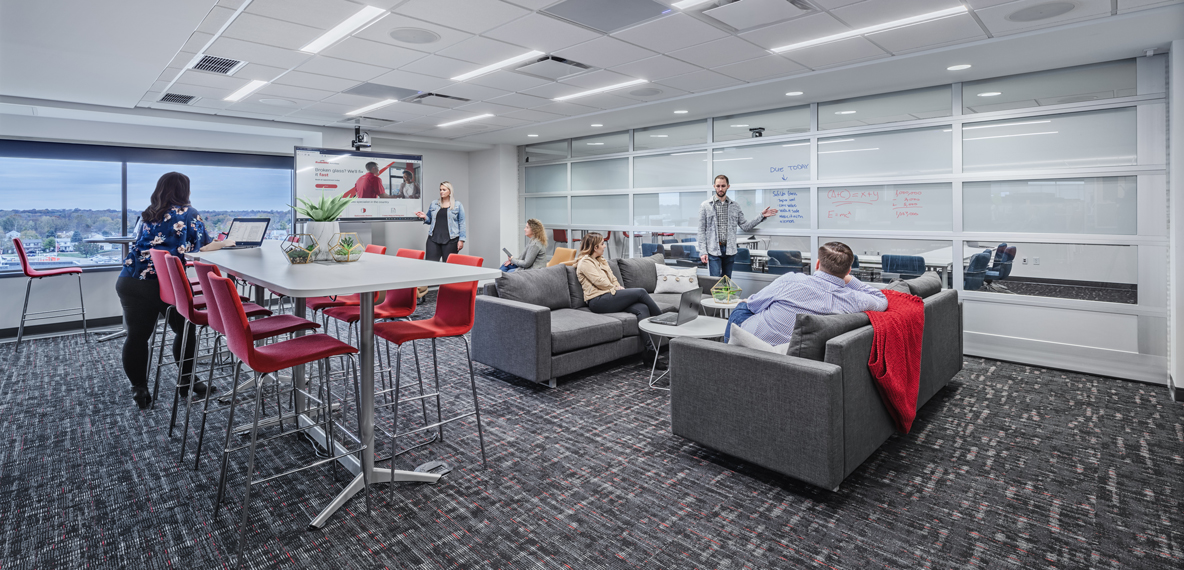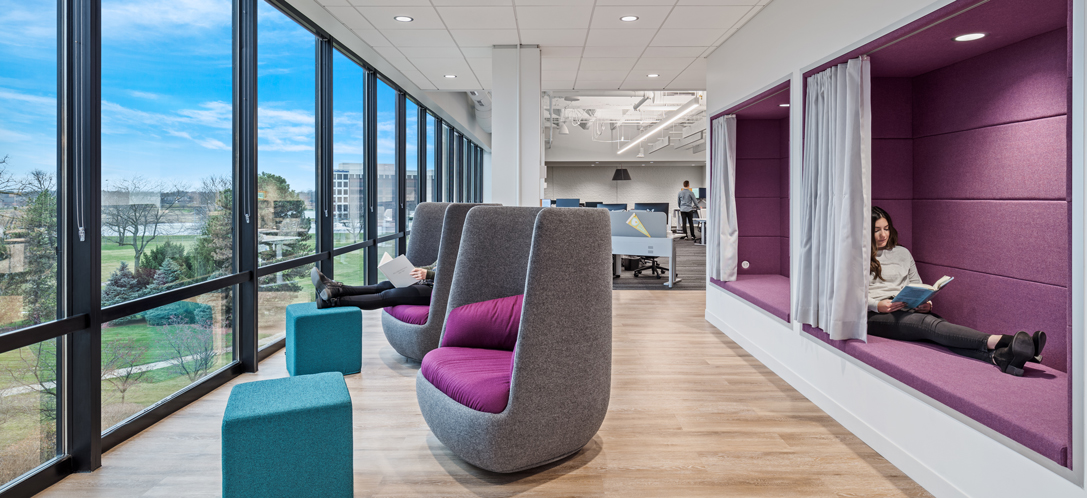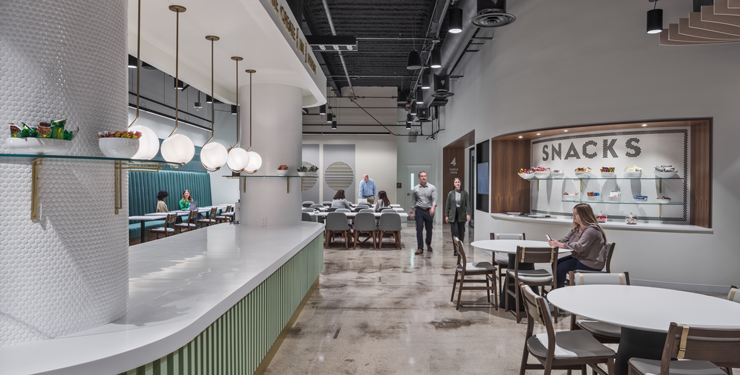
The Innovation Equation: Nurturing Creativity in a Data-Driven World

The MBA corporate lexicon has permeated our modern world so completely that it is nearly impossible to go a week at work without hearing about KPIs, ROI, or the need to “circle back” to either of those. When it comes to a fuzzier topic like innovation, those very same measurement tools begin to act as a firewall to creativity. Creativity needs space to flex and grow. KPIs focus on the results more than the process, so people tend to stick with what they know rather than push boundaries. Companies understand that innovation is necessary to remain relevant and gain a competitive edge, but how hard into the paint are they willing to drive without a clear methodology for spurring innovation?
So, is there a formula for innovation? The short answer is yes, but it comes with a caveat. Innovation is a process that requires time and patience; immediate results are not always guaranteed. However, understanding and implementing key components can significantly foster innovation. Let's delve into these critical factors and explore how they can either drive—or hinder—the process.
Where Does Innovation Begin?
Innovation begins with understanding the problem you’re trying to solve for (X). Most innovative solutions begin with a muse or inspiration born of frustration. Sometimes, when looking to solve a problem, you will find a lucky solution to a problem you didn’t know existed. The first input into the formula is (M) for muse or inspiration, and we’ll add (L) for luck. So, (M+L).
Back in the early 1920s, General Electric (GE) would haze new engineers in the light bulb department by tasking them with finding a way to diffuse the light from inside the bulb without losing light production. It was believed to be impossible, so it was a fantastic prank on the new hires. In 1925, Marvin Pipkin, not knowing that the task was “impossible,” did exactly that. He devised a way to acid etch the inside of the glass while also strengthening it. Marvin Pipkin was given the muse of a problem to solve, and GE was lucky that he didn’t understand it was meant to be a joke.
Creating a space that fosters inspiration is important. Understanding how people solve problems helps build that environment. If you pose a question like, “How can we improve operational efficiency?” in a meeting, you’ll get top-of-mind ideas from the people who feel comfortable sharing and thinking out loud. But many of your “big idea” innovators are processors. Give them a problem and let them live in it for a while, and they’ll come back with a solution as long as you’ve created an atmosphere where they know those ideas are welcome.
Two of my BHDP colleagues co-authored an article titled “How Innovation and Discovery Flourish in Labs Designed for People,” in which they state, “Previously, it was a common belief that space designed for the nebulous concept of ‘innovation’ could inspire discovery and creativity. The reality is people are the ones who make the innovation, so organizations focused on discovery and innovation must create spaces that support and enable their greatest assets, their people.”
Space can’t create innovation; people do. Companies need to prioritize those people if they want to produce innovation.
This brings us to the next part of the equation.
What Eats Innovation?
The biggest killer of innovation is risk aversion. If you don’t want to take any chances, wait to see what your competitors do, then follow suit. Risk comes from fear (F), and investment is the best way to mitigate fear. That investment can be in training your employees through continued education or certification or through investing in new technologies that support your goals. Let’s call those investments research. So, risk (R1) can be divided by research (R2) making (R1/R2).
I remember when BlackBerry was new. Someone handed one to me, and my professional life was transformed. For a while, BlackBerry was the pinnacle of personal communication. Ultimately, they were a victim of their success. BlackBerry was so certain their formula was perfect that they refused to adapt and grow with the industry and client needs. Change is constant, and the more it is embraced, the greater the chances of sustained success.
Another factor that can slow innovation but is not a direct part of the formula is groupthink. Yale University Research Psychologist Irving Janis defined groupthink as a mode of thinking in which people in a group engage in, where striving for unanimity overrides the motivation to realistically appraise alternative courses of action.
If you have a group of people who collectively get excited about something and bounce ideas off each other, that is totally fine. But you need diversity of thought to thoroughly explore an idea. In World War Z, there was a concept of the 10th person. If the first nine people agree on an idea, it is the duty of the 10th to disagree to help sharpen the perspective of the others.
What Feeds Innovation?
The fast answer is people; people who feel trusted, safe, and are willing to share ideas. A culture that reframes failure as discovery. Edison is quoted as saying, “I didn’t fail 1,000 times. The lightbulb was an invention with 1,000 steps.” Keeping that in a framework of discovery, are you willing to make 999 discoveries that eliminate the variables preventing your success to find the one that works?
Invest in people. Give them the time they need to think about a problem. Find a way to challenge your own assumptions and the assumptions of others in a way that builds trust. The final piece of the formula is effort (E). How much effort are you willing to embrace to help build solutions? Effort is a multiplier.

Within the workplace, it’s important to provide employees with spaces for focused work, as this is where some employees do their best thinking.
The Formula for Innovation
Here is the formula I’ve come up with: ((M+L) / (R1/R2))*E) / F = I
As a reminder, this translates to: ((Muse + Luck) / (Risk/Research))*Effort) / Fear = Innovation
Risk can diminish the inspirational spark, but research can mitigate it. Effort multiplies the possibility of a positive outcome, while fear can undermine the entire process. However, fear can be reduced over time in an environment of trust and a willingness to be bold and take chances.
The formula is simply a way to analyze the components of innovation and see where you can make an impact or need support. Innovation is messy, and most businesses don’t like clutter. But in a world where technology advances exponentially, what’s the cost of not investing in your people when you could be leading the pack?
When stuck in solution mode, it is easy to hyperfixate on one approach. Use the formula to disrupt and renegotiate your mindset. Have you invested enough in the education of the problem solvers? Do they have the tools they need to solve the problem? Do they feel safe sharing? Where can you find inspiration? How can you reduce fear? And if you’re still struggling, set it aside for a while. Maybe you’ll find your luck.
BHDP offers strategic services and has tools to analyze perceptions of innovation within organizational culture.
If you’re looking to foster an innovative culture or design spaces that encourage innovation, please email [email protected] or fill out the form below.
Author
Content Type
Date
July 10, 2024
Practice
Topic
Innovation
Workplace Strategy



